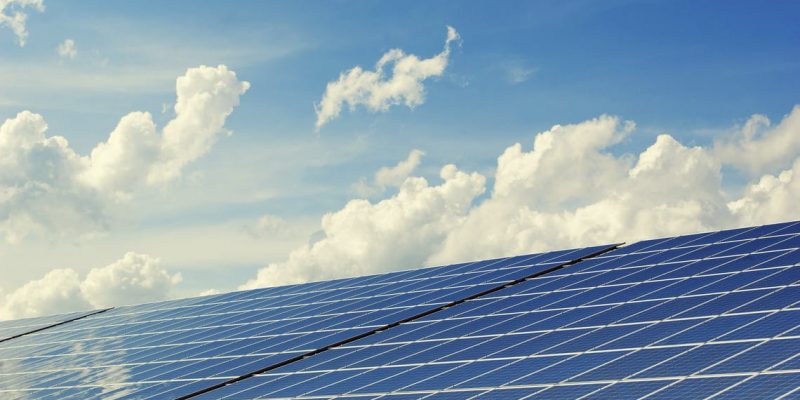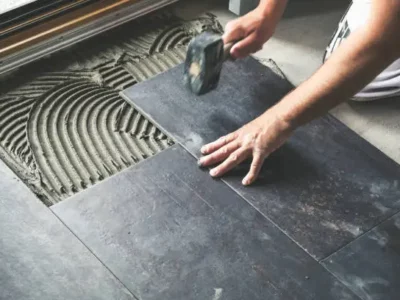Due to a rise in transportation and industry, the amount of energy required has increased considerably in recent decades. On the other hand, fossil fuels pollute the environment and are becoming more scarce.
The energy crisis is a big problem that our societies are now grappling with as we approach the end of our current supply of these resources.
The question that everyone is asking is, “Can Solar Energy Solve the Energy Crisis?” Take a closer look at how solar panels function, and we’ll address most of your concerns here:
So, what is solar energy?
The heat and radiant light released from the Sun, which can be harnessed with technologies such as solar power and thermal energy, is the simplest definition of solar energy.
The amount of sunlight that enters Earth’s atmosphere in just one hour is sufficient to meet the needs of every human being on planet Earth for a whole year. To use Sun’s potential and to put its energy to work, we must first understand how solar energy functions.
How does it work?
If you have ever looked at solar panels on the roofs and asked yourself what they do and how they exactly work, you are not alone because we all have been there wondering the same questions.
Those futuristic, glittering expanses of glass are but one part of a complex network that uses the Sun’s renewable energy to supply electricity to the house.
Here we have listed the five steps on how solar energy works:
Sunlight starts off the panels
Silicon cells, metal frames, and glass enclosures with custom coatings and wiring are all included in each panel. The panels are collected together and lined up to achieve maximum effect, positioned on rooftops or similar large spaces. Solar cells, or photovoltaic cells, convert sunlight into electricity during daytime hours.
The Cells generate electrical current
A thin semiconductor wafer of two silicon layers is contained within each solar cell. An electric field is created when one of the layers is positively charged and the other is negatively charged. A photovoltaic solar cell is energized by solar light energy, which also causes electrons to loosen up from atoms within the semiconductor wafer. Electrons lose from their bonds flow about the wafer in an electric field, creating an electrical current.
The electrical energy is transformed
You now have solar panels that efficiently convert sunshine into electricity. Still, the produced electricity is referred to as direct current (DC), not the alternating (AC) electricity that powers most homes. Fortunately, a device called an inverter makes it simple to convert DC into AC electricity. These inverters can be set up in current solar systems as a single large-system inverter or as several tiny inverters attached behind the panels.
Now, your home is powered by converter electricity
After being transformed from DC to AC electricity, solar energy is dispersed throughout the house to power your appliances. Nothing inside the home needs to alter because it operates like the electricity your electric utility provider generates through the grid. You can automatically draw additional electricity to make up for any solar power shortfalls from the grid because you are still connected to your traditional power provider.
The consumption is measured by a net meter
Overnights and on cloudy days, your solar panels might not be able to collect enough sunlight to utilize for energy. On the other hand, during the day, when no one is home, they might gather more energy than you need to run your house. For this reason, a meter measures the amount of power moving both to and from your home. Your utility company frequently gives you credits for any excess power you return to the grid, known as net metering.
Commonly Asked Solar Energy Questions
While you may have a basic understanding of solar energy, you may still have questions about solar panel installation. Here are the three most often asked questions about solar energy:
How much will I save each month on my electricity bills?
It all depends on where you live, your utility company’s rate, and how much electricity your home or business uses. However, most solar energy companies aim to reduce your monthly electricity bill by 70 to 90%.
Installing solar panels on your property will enable you to produce more electricity for free than you consume from the utility company.
Additionally, you will generate more than enough to sell back to the utility company in the form of credits, which will further reduce your monthly rates. No more unforeseen electrical costs to wreck your finances again!
Energy.gov says approximately 25 to 30% of residential heat energy is lost through windows. For this not to happen, an investment in replacing your single or double-paned windows with triple-glazed windows produced by window companies that prioritize energy efficiency would increase the potential of this form of energy.
Do solar panels only work in sunny areas?
When it’s cloudy outside, your solar array will still function because ambient light and UV light still reach your solar panels to produce electricity.
Your solar array will power your home or place of business even though it won’t be as effective as on a sunny day without clouds.
Germany, which has almost the same sunny days as Alaska, now sources 85% of its energy from renewable sources, including solar energy.
How hard is it to maintain solar panels?
Solar panels require less maintenance than your property’s heating, ventilation, and air conditioning appliances. It’s because no moving parts in solar panels could break.
The only thing you will need to do to maintain your solar panels is to keep them clear of dust, pollen, leaves, and other debris because your solar panels will generate less electricity if something is blocking them. That’s not so hard.
You could DIY install them, but you would rather have a knowledgeable electrician install solar panels. Depending on the size of your solar array, mounting choice, and property size, installing them could take two to several hours.
Also, as solar energy becomes more popular and technology improves, the cost of solar panels and other equipment is dropping rapidly, especially in certain states. The cost of solar panels in Texas is below average because of the states growing investment in renewable energy technology.
Advantages and disadvantages
As stated by National Geography, solar power has advantages and disadvantages; fortunately, the upper hand outweighs the downside of solar energy.
One significant advantage is that solar power is clean energy. After building and installing the solar technology, it is no longer necessary to use fuel for solar energy to operate. Neither harmful substances nor greenhouse gases are released by it. We can significantly lessen our impact on the environment by using solar energy.
Solar cookers are a great substitute because 2 billion people still use wood-burning stoves for cooking. Solar cookers make water sanitization and food preparation more accessible and safer. And the best good news is that for another 5 billion years, we will have an endless supply of sunlight.
The main disadvantage to using solar energy is the required equipment. The equipment used in solar technology is pricey. The cost of purchasing and installing equipment for each residence can reach tens of thousands. The initial cost is too high for many people to consider, even though the government frequently gives reduced taxes to individuals and businesses using solar energy.
Solar Energy Is The Answer To The Latest Energy Crisis World Face
The energy price cap is meant to prevent businesses from charging excessive amounts for heating and electricity. Still, as gas prices increase, an unusually chilly winter, high demand from Asia, and the war in Ukraine have quadrupled gas prices compared with last year, meaning everything is pushing forward what the world needed: more solar panels on rooftops.




















